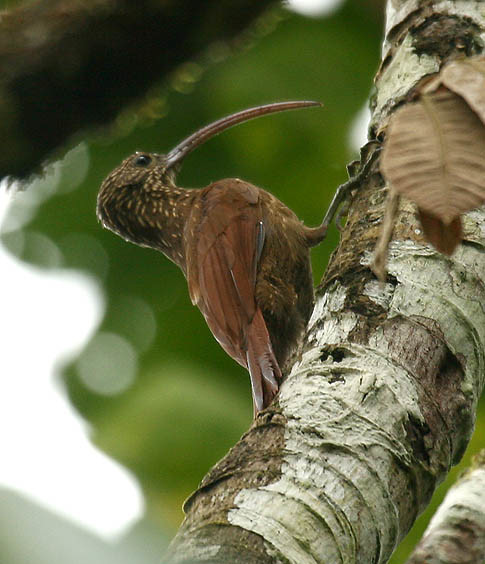Birds are the most intensely observed and studied of all vertebrates, yet each year ornithologists and birders, surprise us with new species. 2013 was a particularly fruitful time for the species-seekers. Included among the year’s discoveries are an owl endemic to a single island, a loud, colorful songbird found in the middle of a bustling capital city, and scores of others, some quite large and brilliantly-colored. Without further delay – check out the new bird species of 2013 below!
Rinjani Scops Owl, Otus jolandae
This owl was confused with the Malaccan Scops Owl until an ornithologist noted a difference in their calls. The Rinjani Scops Owl produces whistling vocalizations that are most “un-owl-like” and, once heard, cannot be confused with those of its relatives. The fact that it is endemic to Lombok Island, in Indonesia’s Lesser Sunda chain, lends greater importance to the find…island endemics often face threats to their survival.
Birds of the Amazon Basin

Uploaded to Wikipedis Commons by David.Monniaux
Once again, the Amazon Basin yielded more new birds (and a great many insects, fishes, mammals and other creatures) than anywhere else on earth. This might be expected, as it is a world center of bird diversity, with over 1,300 species identified thus far. But many of the 15 new species described this year surprised even seasoned local ornithologists with their size and coloration…the Campina Jay (a similar relative is pictured here) and the Tupana Scythbill (a
similar relative is pictured below) are good examples. Other new species included woodcreepers, puffbirds, antwrens, flycatchers and gnatcatchers.
Cambodian Tailorbird, Orthotomus chaktomuk
Although the Cambodian Tailorbird is only wren-sized, it sings loudly and its rust-colored head cap and black throat are very distinctive. So ornithologists were quite surprised to find that it had been “hiding in plain sight”. It was first seen at a construction site in Phnom Penh, Cambodia’s bustling capital city. Further investigation revealed that it inhabits patches of scrub throughout the city, and is common on nearby river floodplains.
Guerrero Brush Finch, Aremon brunneinucha
This beautiful little bird, a relative of the sparrows and buntings, is in need of study and protection. Found only in the cloud forests of Mexico’s Sierra Madre del Sur mountain range, it is similar in appearance to related species (please see photo), but little is known of its natural history or the status of its population.
Sierra Madre Ground Wren, Robonius thompsoni
This newfound bird is placed in a very unique genus, which contains only two other species. Ground Wrens are found only in the northern Philippines, and seem unrelated to other songbirds. They stay mostly to thick brush and forest undergrowth, and are believed capable only of weak flight. The newly-discovered species is, like the others, a master ventriloquist…locating one by voice alone is said to be impossible. Much remains to be learned about the group’s natural history and conservation needs.
Further Reading
Bald Parrot Discovered in Amazon
 That Bird Blog – Bird Care and History for Pet Birds
That Bird Blog – Bird Care and History for Pet Birds





That jay is perhaps the loveliest thing I’ve ever seen, but these are all wonderful. Thanks for keeping us abreast!
Thanks, Joy…I think it is spectacular also, best, Frank